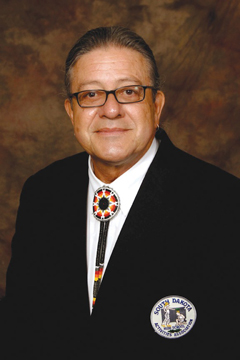Duane Champagne, Indian Country Today Media Network
What is an indigenous nation? What does indigenous nation building mean? Currently the word “nation” is in wide use among tribal leaders and academics, but perhaps the word has different meanings for different groups.
The word “nation” itself is not an indigenous word, and there may lay a significant caveat. However most indigenous communities have a word for expressing the concept of a collective political or cultural group. The way that most academic and planning experts use the word nation, however, does not have indigenous origins. Rather, the expression of “nation building” comes from the history of Western societies and through the modernization development literature. Nation as expressed in the development literature implies a people who have shared political commitments and agree to follow common rules of citizenship.
Each individual, each citizen, makes a collective commitment and loyalty on certain issues such as shared military obligations, common defense, shared government, and shared economic or market institutions. If one part of the nation is attacked by a foreign nation, then the rest of the citizens are obligated to defend the nation and their fellow citizens. Nations, which may have a variety of government forms, must share rules, norms, obligations, and goals.
The development of nations, or nation building, is a major goal in the modernizing development literature because once a nation is truly achieved, it forms the basis for consensus in achieving common political, economic and cultural goals and values. Nations, in the sense of committed individual citizens, are a fundamental building block of contemporary democratic governments and market systems. The development theory experts suggest that Indigenous Peoples follow a path toward democratic government and free markets based on an interpretation of nation that is prerequisite to upholding contemporary non-indigenous economic and political forms.
Many, if not most, Indigenous Peoples do not and did not form nations that are or would have been directly supportive of markets and contemporary democratic governments. The very difference between a tribal society and a nation in the contemporary sense is that tribal societies are framed on kinship and local loyalties that supersede national loyalties. In tribal societies, kinship identity plays a central role. In contrast to nation, often in tribal communities clan organization, if present, take up the duties of managing justice, and revenge with other Indigenous Peoples. Among the Cherokee and Iroquois, clans managed justice. When a person was killed by a non-tribal member it was the clan, not the nation, that was obligated to seek retribution.
Many contemporary tribal peoples maintain loyalties that are local and kinship based. Tribal communities in southern California are mostly family based, but that does not stop them from managing highly profitable casinos and managing good government. Political and social loyalties to family, kin, and/or local group are often stronger than any loyalty or obligation to a national group or identity. While there is much honoring of the Sioux Nation, most contemporary Lakota, Dakota and Nakota maintain local and kinship based identities and social obligations. Over the course of colonial contact, some Indian peoples have internally grouped together to strengthen their ability to defend themselves against the threats of marginalization, assimilation, and incorporation. Indigenous Peoples who formed national identities and institutions include the Cherokee, Choctaw, Chickasaw, Agua Caliente Band of Cahuilla Indians, and others.
The modernizing theory that nations are prerequisites to participation in market economies and democratic governments is not borne out by the experiences of Indigenous Peoples. Where tribal groups have access to market opportunities, and can maintain their own collective control over tribal land and government, then many tribal communities can accommodate economic market participation and manage equitable distribution of resources, as well as good government. Indigenous nations, often still based on kinship, are part of the contemporary world and will remain so indefinitely. Kin-based indigenous nations will surprise many by the innovative ways they will manage future economic and political relations.
Read more at https://indiancountrytodaymedianetwork.com/2013/06/29/what-indigenous-nation-149820







